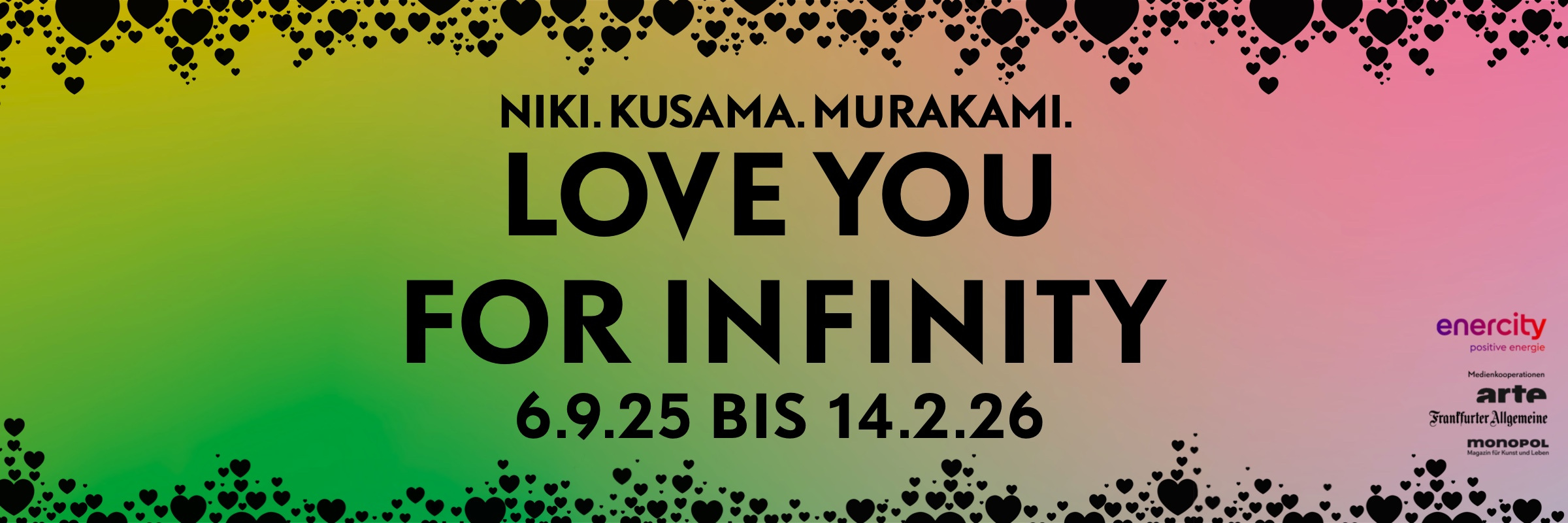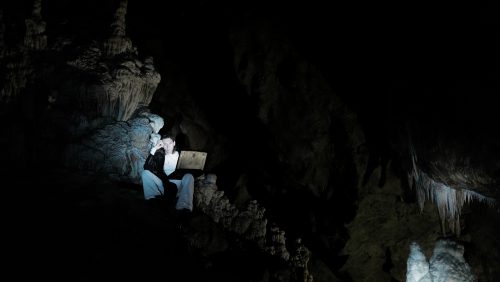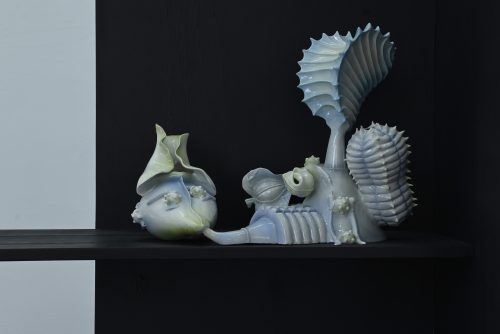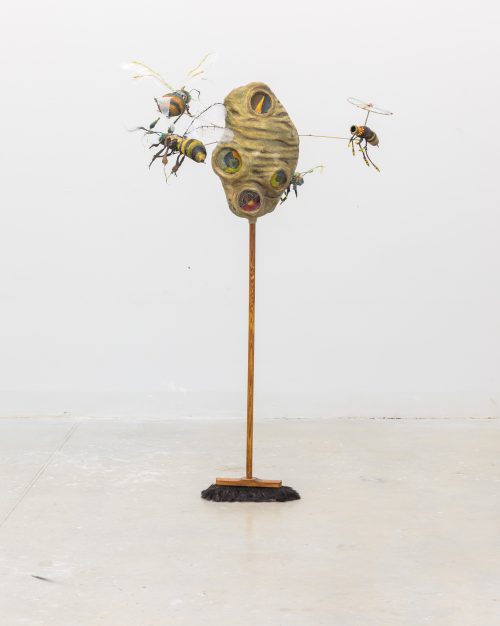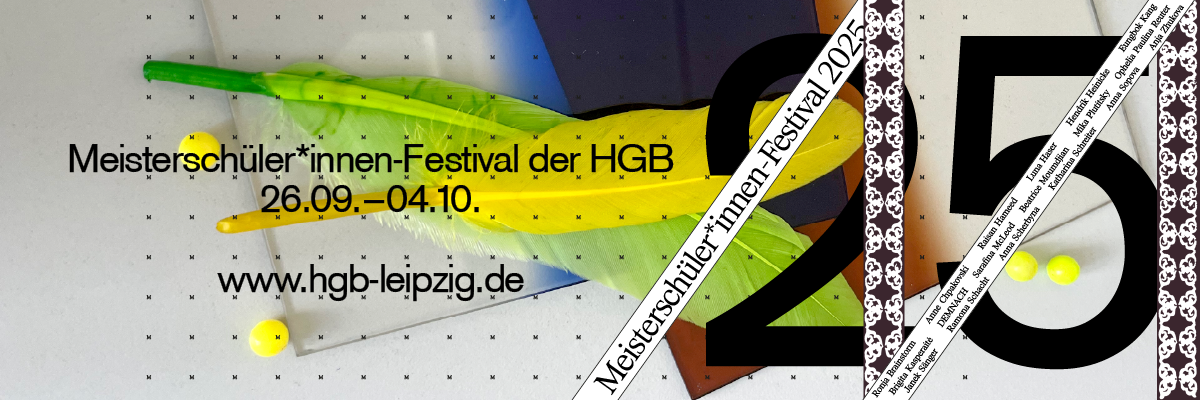
Vincent Sheers
The History of the Criminal
Project Info
- 💙 Sharp Projects
- 💚 Ilethia Sharp
- 🖤 Vincent Sheers
- 💜 Zakirah Rabaney
- 💛 Bjarke Johansen
Share on
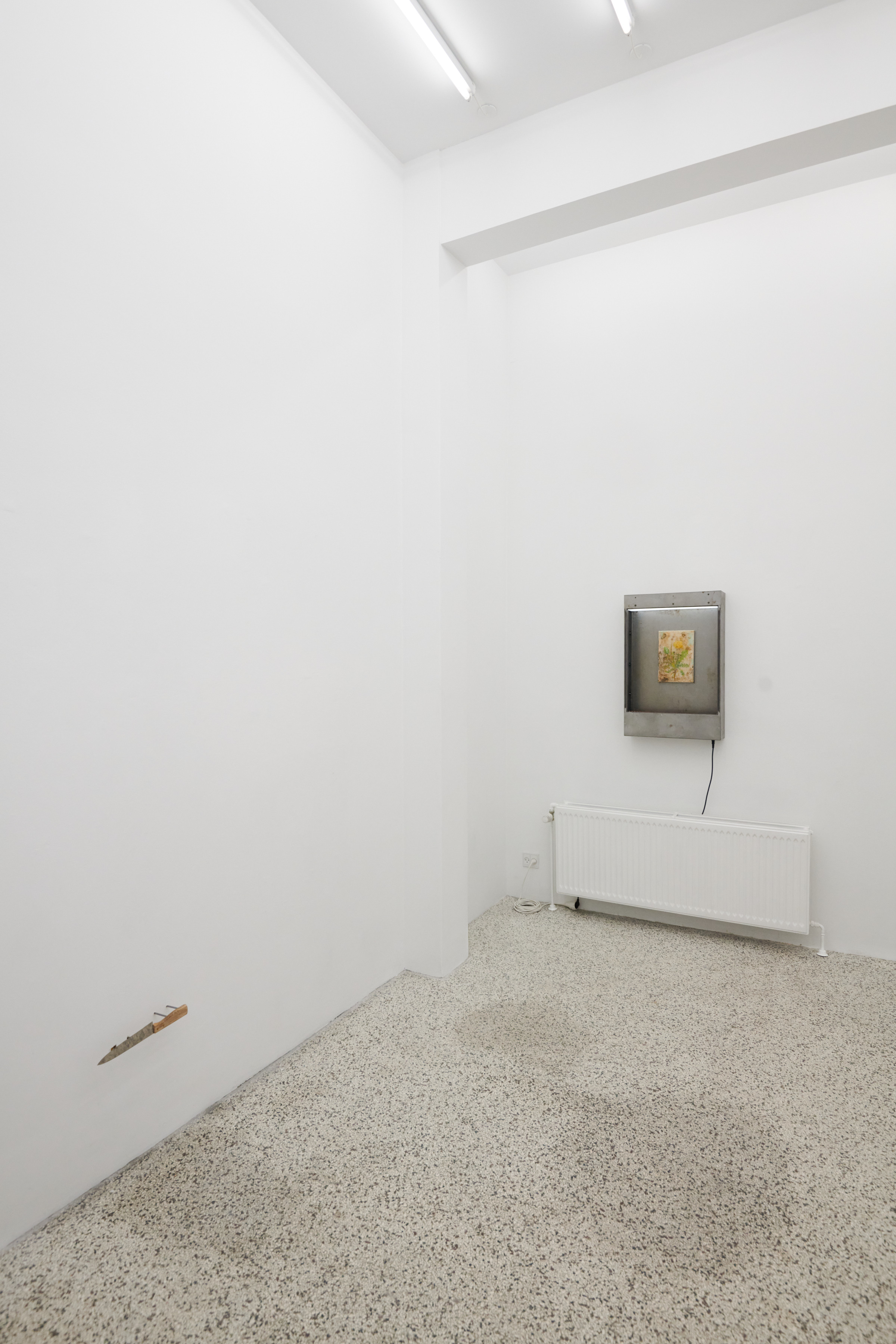
The History of the Criminal installation shot
Advertisement
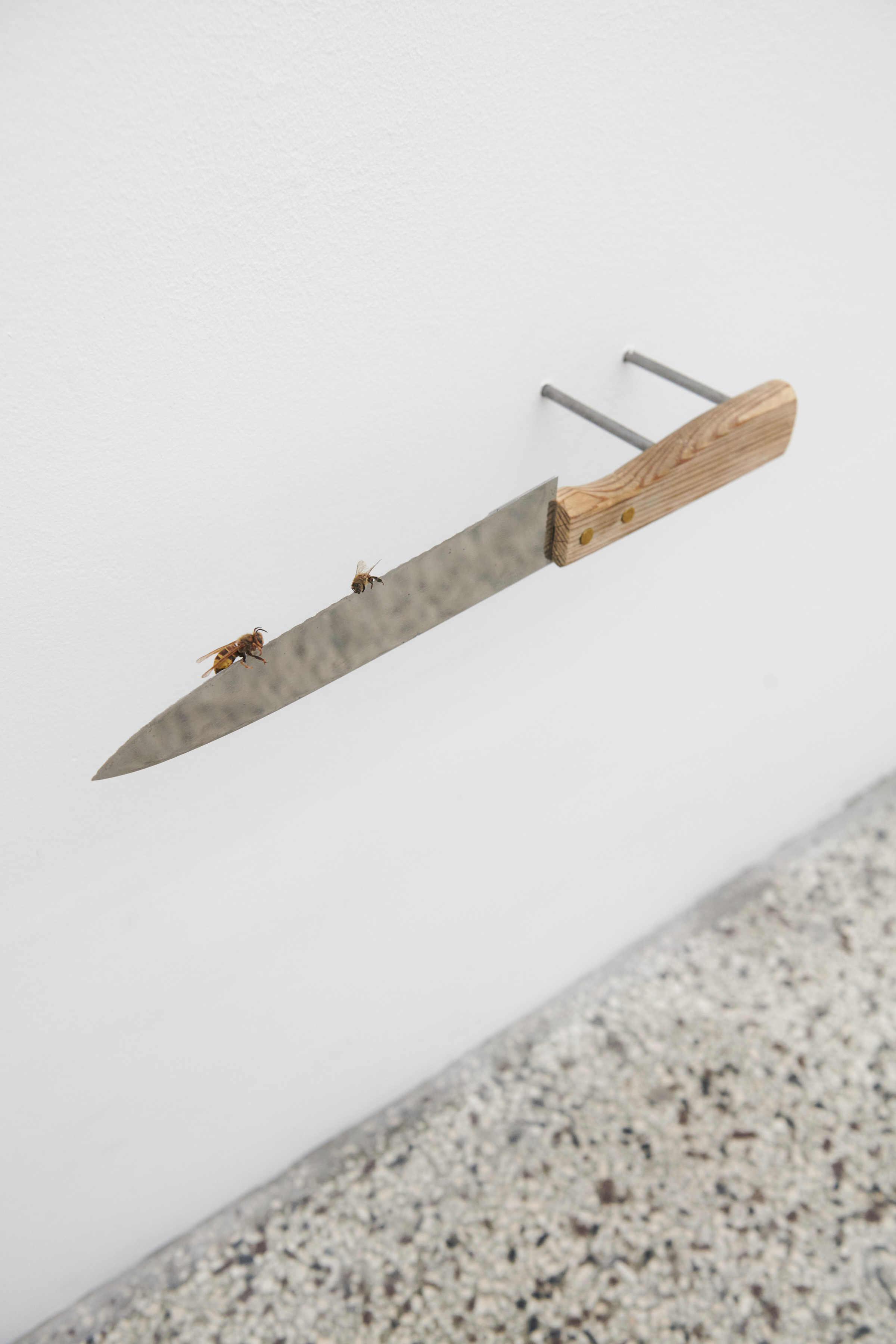
Wasp and bee on knife, 2022, Vincent Sheers
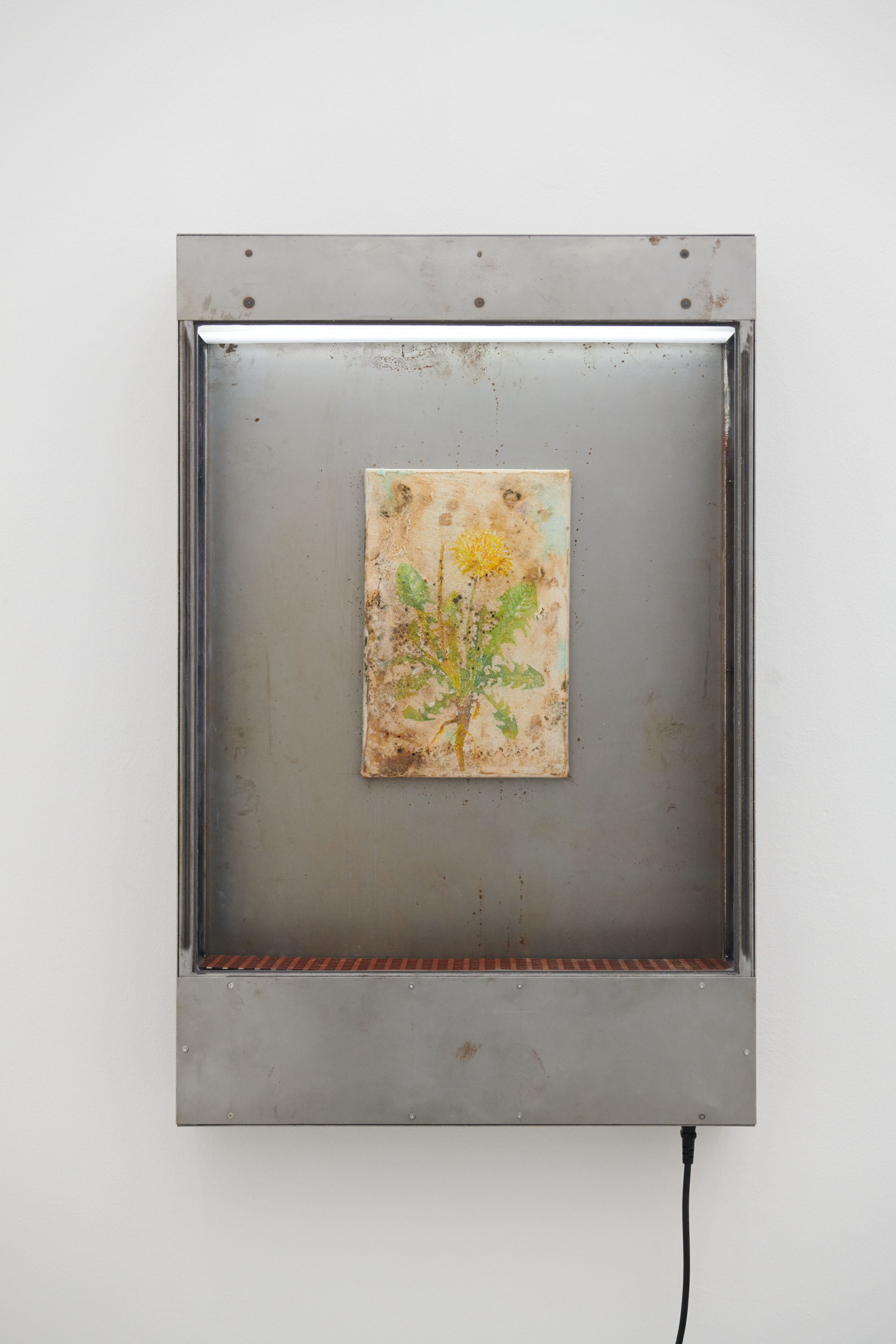
Incubator Study III, 2023, Vincent Sheers
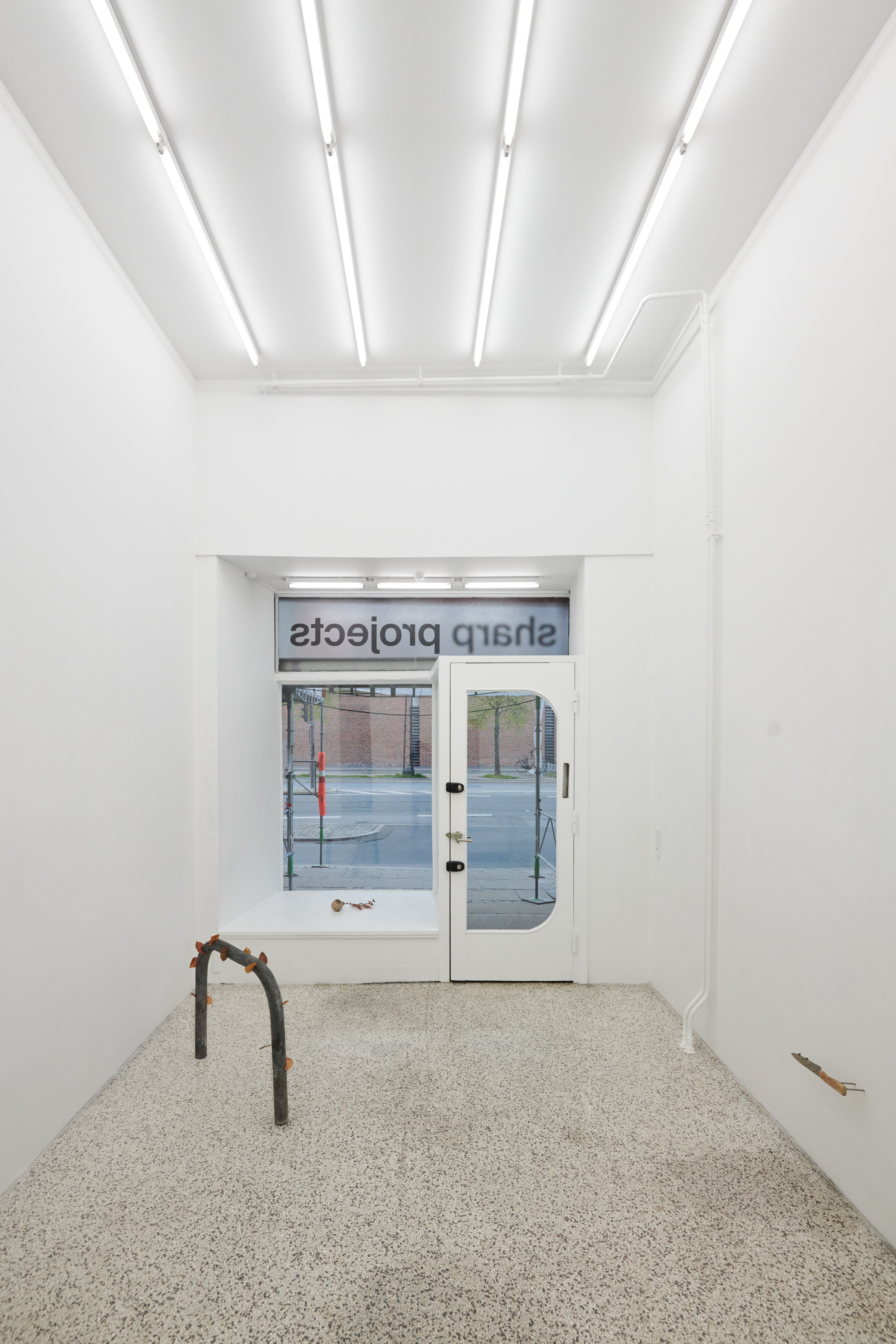
The History of the Criminal Installation shot 2
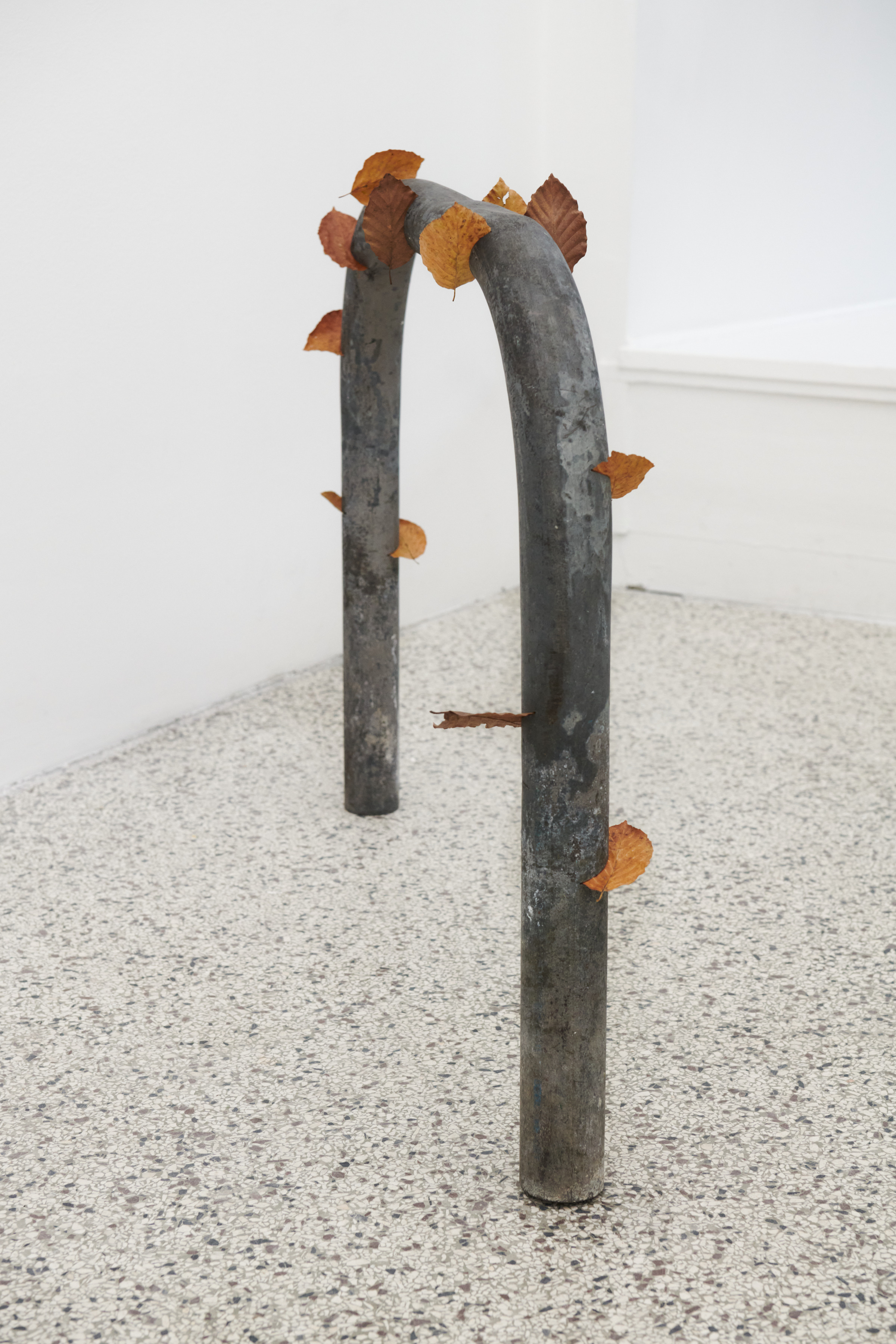
Untitled, 2023, Vincent Sheers
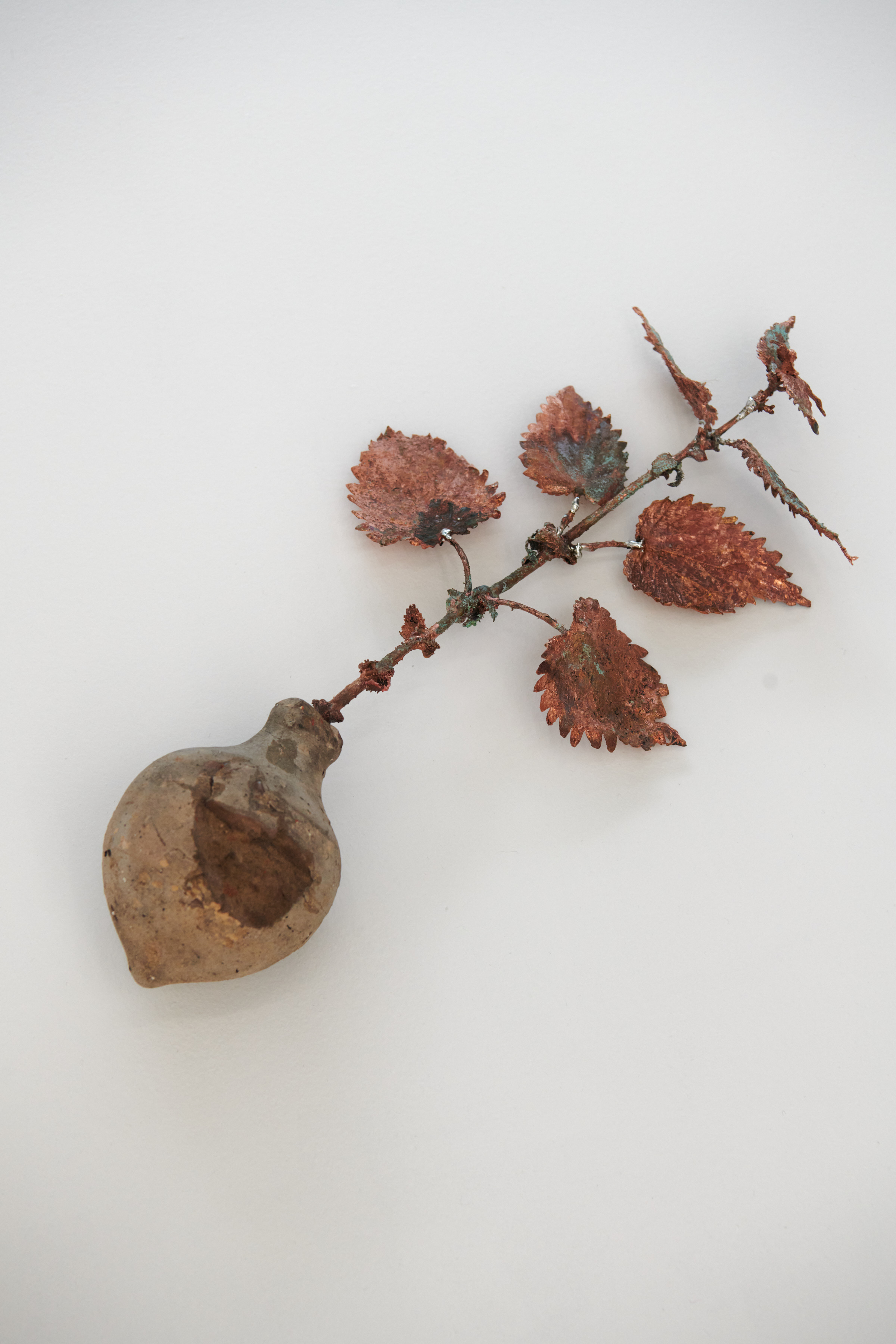
A Brief History of Chemical Warfare, 2022, Vincent Sheers
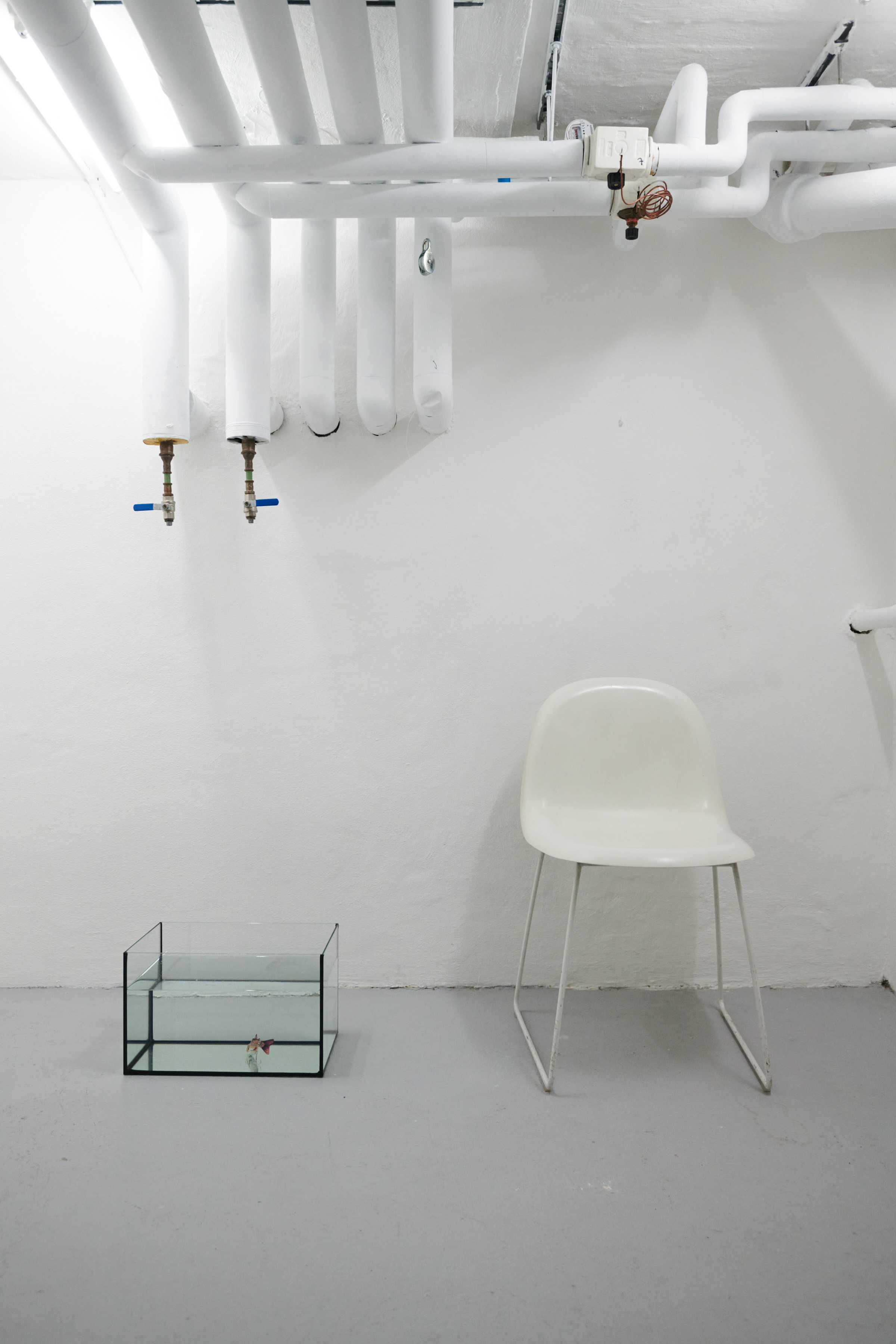
The History of the Criminal Installation shot 3
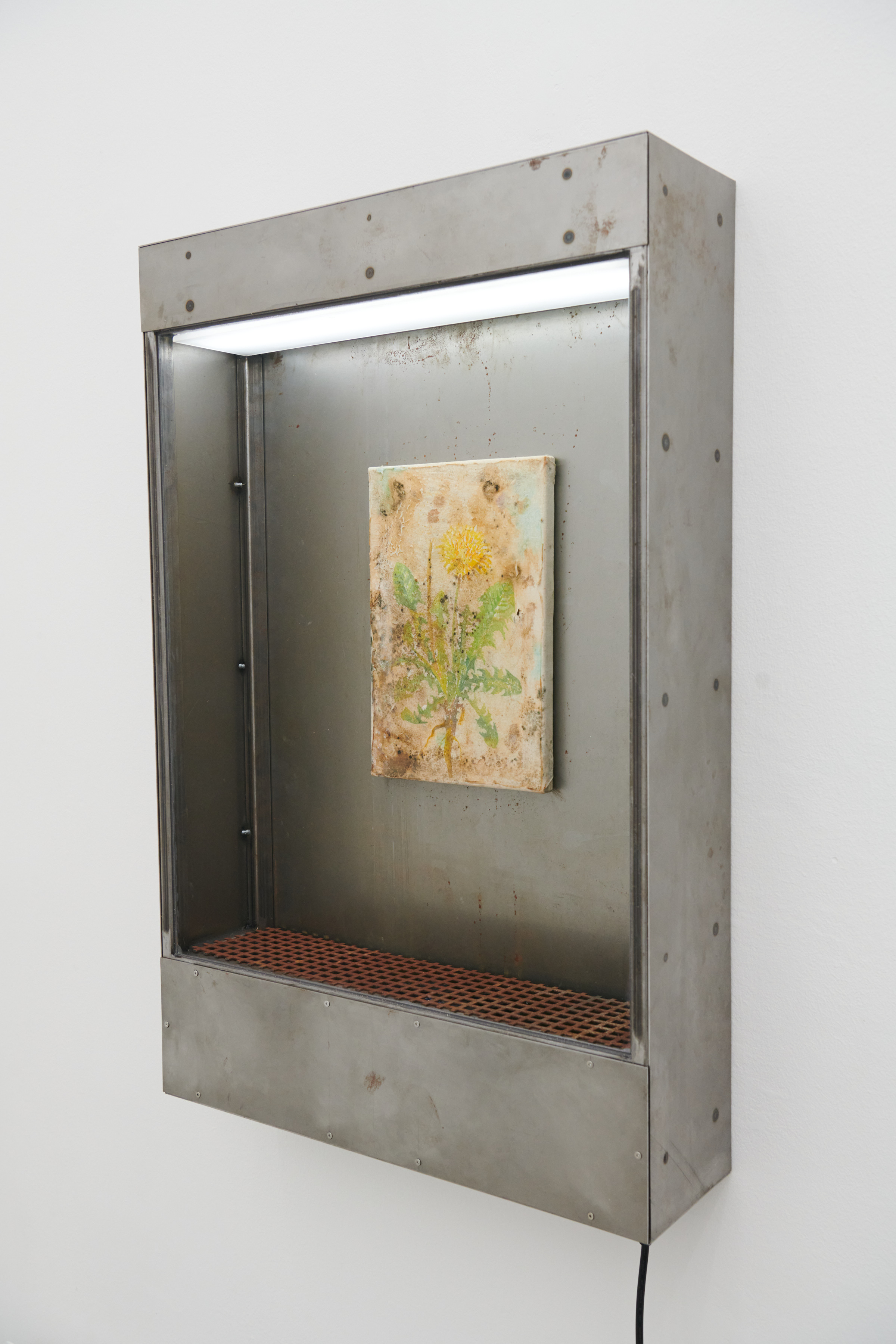
Incubator Study III detail, 2023, Vincent Sheers
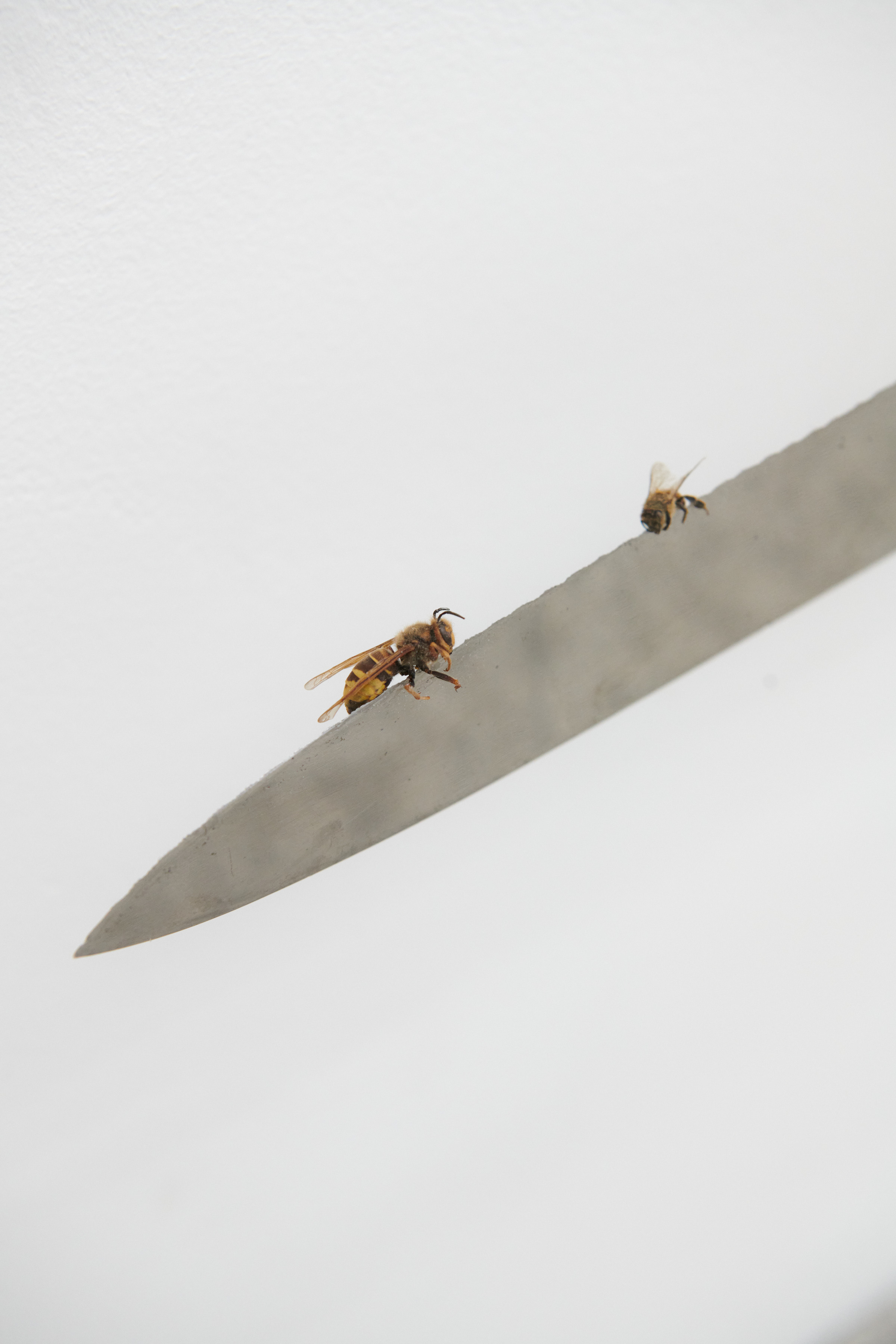
Wasp and bee on knife detail, 2022, Vincent Sheers
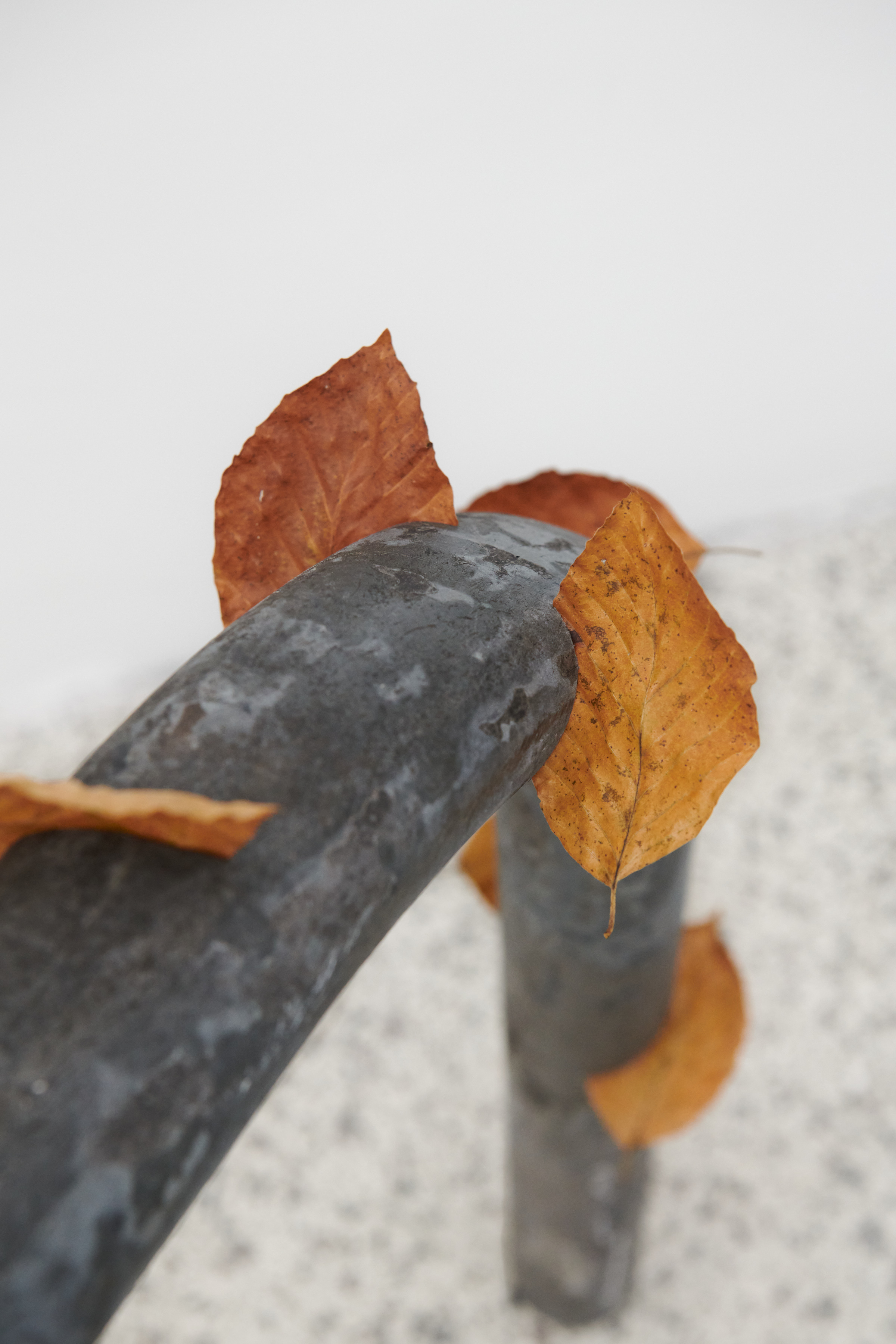
Untitled detail, 2023, Vincent Sheers
Vincent Scheer's (b. Duffel, Belgium, based Munich, Germany) solo exhibition The History of the Criminal confronts the self-interest of animals, plants, microorganisms and insects with bureaucratic systems. By criminalizing non-human protagonists in his narrative artworks, Scheers investigates their agency and attempts to put the superiority of ethics on trial in the mind of the viewer.
The artist's research mines the lesser-known history of animal trials in western Europe during the Middle Ages and how the unpredictable behavior of animals resulted in their criminal prosecution. Notably, in the 18th century the legal system determined that the owners of animals would be held liable instead. Informed by the scholar and animal rights advocate E.P. Evans’s The Criminal Prosecution and Capital Punishment of Animals (1906) and the philosopher Michel Foucault’s Discipline and Punish (1975), Scheers’s research shapes the content of his artworks just as much as their form and material does. He critically addresses the position of non-human life forms in manmade systems—albeit in uncanny and even humorous ways.
The absurdity of violent entertainment becomes both the point and punchline of Scheers’s performance in which he is the human victim of an electronic bait fish. The artist sits near a small aquarium in which an electronic fishing lure is hooked to his earring via a pulley system. The suspense created by the idea of bodily harm at the hands of an electronic fish’s menacing clumsiness produces the “appeal of violence”. The draw of the artist’s performance lies in this curious pleasure of watching, probing whether the spectators realize that it is not the artist who is caught by the electronic lure, but rather they who are caught in the torturous spectacle of it all.
Violent attraction also takes effect in the assemblage Wasp and Bee on Knife (2022). The conflict between these insects, performed on the edge of a blade generates hostility. Yet the knife as a man made tool—or weapon—insinuates the absent human body and suggests whether there is a third adversary in this interspecies confrontation. Told like a contemporary myth through the assemblage’s materials, the character constellation recounts the art critic and writer John Berger’s question, “why look at animals?”. This query is not only pertinent to Scheers’s artistic practice, but also to The History of the Criminal’s concept, as he puts insects and plants in relation to the law. The flawed logic of human systems announces itself when non-human life forms are exposed to these systems’ mechanisms of control and power.
The parallel Berger draws between the domestication of animals and the discipline of humans was theorized by Foucault in “Discipline and Punish”, just five years earlier. Berger and Foucault liken the captive animal to the imprisoned human criminal; Scheers transmits these sentiments through Incubator Studies (2023) when mold is permitted to bloom on the stretched nettlecloth’s surface; microorganisms that could be harmful to humans are presented as the protagonists and prisoners of his sculpturesque painting. The watercolor portrait of a dandelion is treated with a gelatin-like substance called agar-agar, upon which germs and bacteria flourish within a moisture and temperature-controlled incubator. It houses the molding canvas like a prison, yet exhibits it like a zoo, in which the microorganisms are both confined to and cared for. The glass and steel chamber symbolizes how behavior is institutionally surveilled and regulated using mold as the anti-hero of this painting’s narrative.
In the same way the amber leaves of Untitled (2021) slice through the thick metal bar of a parking barrier; cutting through the rigidity of bureaucratic structures to reveal the administrative guts of urban spaces that not only enact but also enforce control. Scheers’s conceptual use of this structure demonstrates how a simple metal bar administers or limits access.
A Brief History of Chemical Warfare I (2022) is an oxidized, copper-plated stinging nettle that grows from an ancient Byzantine fire grenade. In three acts, this artwork presents how—over time—the atmosphere, plants, and humans weaponize hazardous chemical reactions as responses to conflict. The first act takes the form of copper with a stinging nettle’s surface. Through the process of oxidation patches of silvery greens appear. The next stage sees the stinging nettle defending itself in the natural environment by using toxins to poison hungry animals that dare to eat it. In the last stage, the ceramic bulb (created to hold flammable liquid as an explosive agent) represents the reaction of humans to war. Using an actual Byzantine fire grenade from between 800–1200 AD that Scheers procured at an auction; time has an intentional material presence in the artists’ practice as a speculative historical survey of conflict.
References
Goldstein, Jeffrey, ed. Why We Watch: The Attractions of Violent Entertainment. New York: Oxford University Press, 1998.
Berger, John. Why Look at Animals? New York: Pantheon Books, 1980.
Chrulew, Matthew and Dinesh Joseph Wadiwel, eds. Foucault and Animals. Leiden: Brill, 2017.
Evans, E.P. The Criminal Prosecution and Capital Punishment of Animals: The Lost History of Europe’s Animal Trials. London: Faber and Faber limited, 1987.
Foucault, Michel. Discipline and Punish: The Birth of the Prison. Transl. by Alan Sheridan. New York: Vintage Books, 1977.
Zakirah Rabaney
